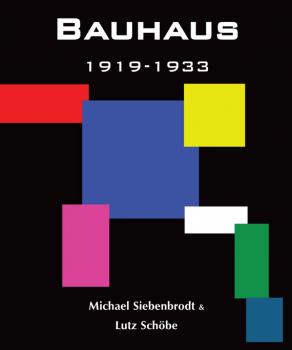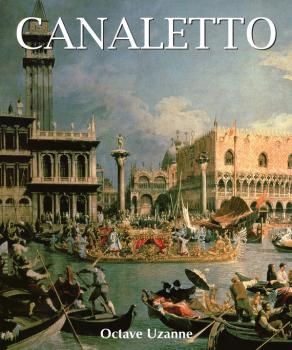Иностранные языки
Различные книги в жанре Иностранные языкиAntoni Gaudí
Spanish architect and designer, Antoni Gaudí (1852-1926) was an important and influential figure in the history of contemporary Spanish art. His use of colour, application of a range of materials and the introduction of organic forms into his constructions were an innovation in the realm of architecture. In his journal, Gaudí freely expressed his own feelings on art, “the colours used in architecture have to be intense, logical and fertile.” His completed works (the Casa Batlló, 1905-1907 and the Casa Milà, 1905-1910) and his incomplete works (the restoration of the Poblet Monastery and the altarpiece of Alella in Barcelona) illustrate the importance of this philosophy. His furniture designs were conceived with the same philosophy, as shown, for example, in his own office (1878) or the lamps in the Plaza Real in Barcelona. The Sagrada Familia (1882-1926) was a monumental project which eventually took over his life (it was still incomplete at the time of his death).
The Art of Champa
From 12 October 2005 to 9 January 2006, the Musee Guimet in Paris will play host to an exceptional exhibition: ‘Treasures of Vietnamese Art… Champa Sculpture’. This show will bring together for the first time, outstanding pieces from the Musée Guimet, the National Museums of France and the national Vietnamese museums of Da Nang and Ho Chi Minh (formerly Saigon). The discretion of private collectors has meant that, until now, much of the wealth of this great Asian art form has remained relatively unknown but this show also includes several truly exceptional pieces from private collections, hitherto inaccessible to both the public and most curators. Jean-Francois Hubert, an international expert on Vietnamese art, has succeeding in creating a unique artistic opportunity. In the 5th century, the Champa kingdom held sway over a large area of today's Vietnam. Several magnificent structures still testify to their former presence in the Nha Trang region. Cham Sculpture was worked in a variety of materials, principally sandstone, but also gold, silver and bronze, and primarily illustrated themes from Indian mythology. The kingdom was gradually eroded during the 15th century by the irresistible descent of the people towards the south (“Nam Tiên”) from their original base in the Red River region. The author explores, describes and comments on the various styles of Cham sculpure, drawing on a rich and, as yet largely unpublished, iconographic vein.
Bonnard and the Nabis
Pierre Bonnard was the leader of a group of post-impressionist painters who called themselves the Nabis, from the Hebrew word meaning ‘prophet’. Bonnard, Vuillard, Roussel and Denis, the most distinguished of the Nabis, revolutionized the spirit of decorative techniques during one of the richest periods in the history of French painting. Influenced by Odilon Redon and Puvis de Chavanne, by popular imagery and Japanese etchings, this post-impressionist group was above all a close circle of friends who shared the same cultural background and interests. An increasing individualism in their art often threatened the group’s unity and although tied together by a common philosophy their work clearly diverged. This publication lets us compare and put into perspective the artists within this fascinating group. The works presented in this collection offer a palette of extraordinary poetic expressions: candid in Bonnard, ornamental and mysterious in Vuillard, gently dream-like in Denis, grim and almost bitter in Vallotton, the author shares with us the lives of these artists to the very source of their creative gifts.
Bosch
Hieronymus Bosch was painting frightening, yet vaguely likable monsters long before computer games were ever invented, often including a touch of humour. His works are assertive statements about the mental illness that befalls any man who abandons the teachings of Christ. With a life that spanned from 1450 to 1516, Bosch experienced the drama of the highly charged Renaissance and its wars of religion. Medieval tradition and values were crumbling, paving the way to thrust man into a new universe where faith lost some of its power and much of its magic. Bosch set out to warn doubters of the perils awaiting any and all who lost their faith in God. His favourite allegories were heaven, hell, and lust. He believed that everyone had to choose between one of two options: heaven or hell. Bosch brilliantly exploited the symbolism of a wide range of fruits and plants to lend sexual overtones to his themes, which author Virginia Pitts Rembert meticulously deciphers to provide readers with new insight into this fascinating artist and his works.
Bauhaus. 1919-1933
The Bauhaus movement (meaning the “house of building”) developed in three German cities – it began in Weimar between 1919 and 1925, then continued in Dessau, from 1925 to 1932, and finally ended in 1932-1933 in Berlin. Three leaders presided over the growth of the movement: Walter Gropius, from 1919 to 1928, Hannes Meyer, from 1928 to 1930, and Ludwig Mies van der Rohe, from 1930 to 1933. Founded by Gropius in the rather conservative city of Weimar, the new capital of Germany, which had just been defeated by the other European nations in the First World War, the movement became a flamboyant response to this humiliation. Combining new styles in architecture, design, and painting, the Bauhaus aspired to be an expression of a generational utopia, striving to free artists facing a society that remained conservative in spite of the revolutionary efforts of the post-war period. Using the most modern materials, the Bauhaus was born out of the precepts of William Morris and the Arts and Crafts movement, introducing new forms, inspired by the most ordinary of objects, into everyday life. The shuttering of the center in Berlin by the Nazis in 1933 did not put an end to the movement, since many of its members chose the path of exile and established themselves in the United States. Although they all went in different directions artistically, their work shared the same origin. The most influential among the Bauhaus artists were Anni Albers, Josef Albers, Marianne Brandt, Marcel Breuer, Lyonel Feininger, Ludwig Hilberseimer, Paul Klee, Wassily Kandisky, and Lothar Schreyer. Through a series of beautiful reproductions, this work provides an overview of the Bauhaus era, including the history, influence, and major figures of this revolutionary movement, which turned everyday life into art.
American Graffiti
The first appearances of graffiti “tags” (signatures) on New York City subway trains in the early 1970s were discarded as incidents of vandalism or the rough, violent cries of the ignorant and impoverished. However, as the graffiti movement progressed and tags became more elaborate and ubiquitous, genuine artists emerged whose unique creativity and unconventional media captured the attention of the world. Featuring gallery and street works by several contributors to the graffiti scene, this book offers insight into the lives of urban artists, describes their relationship with the bourgeois art world, and discusses their artistic motivation with unprecedented sensitivity.
Utamaro
If sensuality had a name, it would be without doubt Utamaro. Delicately underlining the Garden of Pleasures that once constituted Edo, Utamaro, by the richness of his fabrics, the swan-like necks of the women, the mysterious looks, evokes in a few lines the sensual pleasure of the Orient. If some scenes discreetly betray lovers’ games, a great number of his shungas recall that love in Japan is first and foremost erotic.
Malevich
Pioneer of geometric abstract art and one of the most important members of the Russian Avant-garde, Malevitch experimented with various modernist styles. In reaction to the influence of Cubism and Futurism on artists in Russia, Malevitch in his art reduced the world of nature to basic elements and colours, such as in his Red Square (1915). He introduced his abstract, non-objective geometric patterns in a style and artistic movement he called Suprematism. One of the important names of the twentieth century, he however turned back to Primitivism once Russia’s communist leaders forced him to do so.
Canaletto
Canaletto began his career as a theatrical scene painter, like his father, in the Baroque tradition. Influenced by Giovanni Panini, he is specialised in vedute (views) of Venice, his birth place. Strong contrast between light and shadow is typical of this artist. Furthermore, if some of those views are purely topographical, others include festivals or ceremonial subjects. He also published, thanks to John Smith, his agent, a series of etchings of Cappricci. His main purchasers were British aristocracy because his views reminded them of their Grand Tour. In his paintings geometrical perspective and colours are structuring. Canaletto spent ten years in England. John Smith sold Canaletto’s works to George III, creating the major part of the Royal Canaletto Collection. His greatest works influenced landscape painting in the nineteenth century.
Émile Gallé
An icon in the Art Nouveau movement, Émile Gallé (1846-1904) sought to portray the beauty and simplicity of nature in his glass art. His designs, referred to as “poetry in glass”, range from fine pottery to jewellery and furniture. Everything Gallé produced contains traces of his masterful technique which reflects his innovativeness as an artist and his skill as a designer. In this rich text, Gallé unravels the beauty and ingenuity found within his own work.









